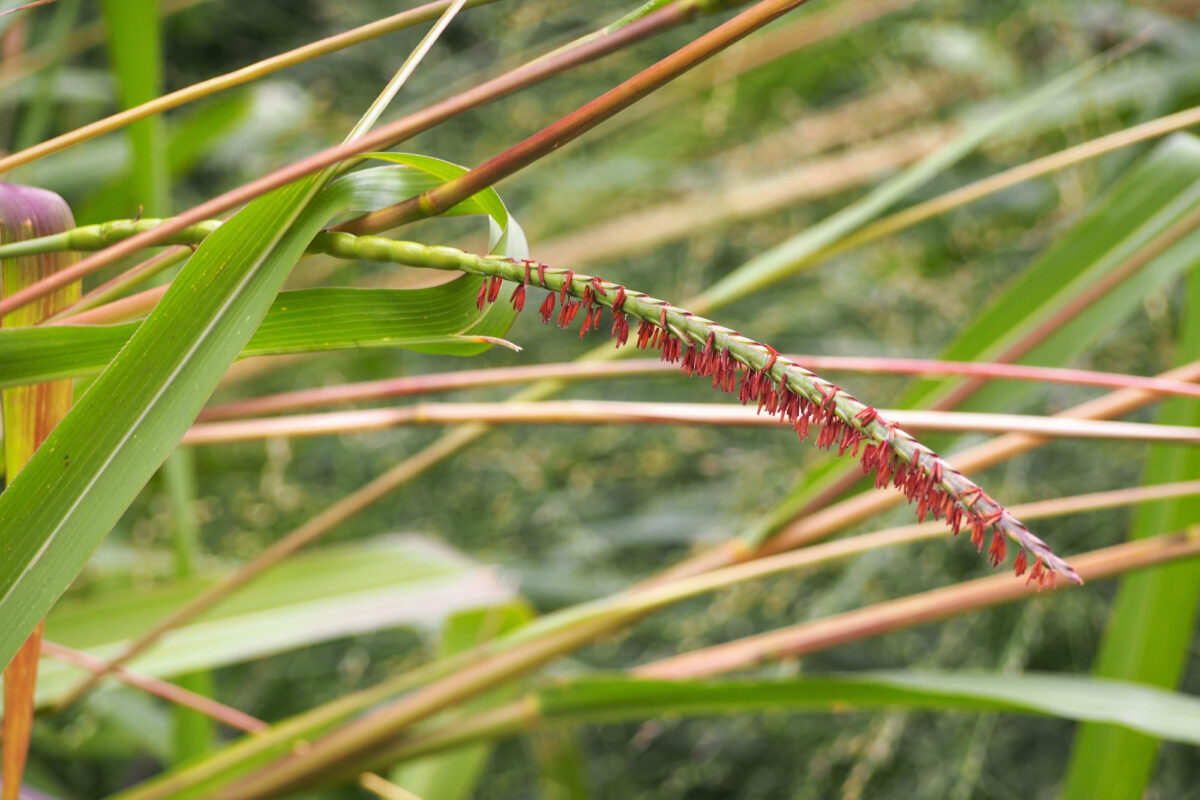Page snapshot: Quick facts about eastern gamagrass (Tripsacum dactyloides), a grass commonly used as forage and in agricultural systems.
Topics covered on this page: What is eastern gamagrass?; Where is eastern gamagrass from?; How is eastern gamagrass grown?; How is eastern gamagrass used?; What are the benefits and drawbacks of eastern gamagrass?; Resources.
Credits: Funded by the National Science Foundation. Any opinions, findings, and conclusions or recommendations expressed in this material are those of the author(s) and do not necessarily reflect the views of the National Science Foundation. Page by Naomi Schulberg (2023).
Updates: Page last updated September 3, 2023.
Image above: Inflorescence of eastern gamagrass (Tripsacum dactyloides); the red structures hanging down are anthers. Photo by Agnieska Kwiecień, Nova (Wikimedia Commons, Creative Commons Attribution-ShareAlike 4.0 International license).
What is eastern gamagrass?
Eastern gamagrass (Tripsacum dactyloides) is a C4 grass that grows in clumps (“tufts”). It is a perennial and can live up to 50 years. It is native to both North and South America and grows best in environments with high moisture.
Eastern gamagrass has a distinctive and attractive appearance, making it a desirable ornamental plant. Its leaves and stems are purplish in color. In North America, it blooms from March to October. It is monoecious, meaning that it produces both male and female florets on the same plant. The stigmas (pollen-receiving structures on the female florets) are bright magenta in color, and the stamens (pollen-producing structures on the male florets) are orange.

Inflorescences of eastern gamagrass (Tripsacum dactyloides). In this grass, female spikelets are near the base, and male spikelets are near the tip. The magenta stigmas can be seen in each image, and the orange anthers can be seen in the left image. Left photo by Agnieszka Kwiecień, Nova (Wikimedia Commons, Creative Commons Attribution-ShareAlike 4.0 International license), right photo by Mason Brock/Masebrock (Wikimedia Commons, public domain); photos cropped, resized, and labeled.
Where is eastern gamagrass from?
Eastern gamagrass is native to the Americas. Its range extends from the equator to mid-latitudes in both the Northern and Southern hemispheres. In the U.S., it grows in the Southeast and also in some southern regions of the Northeast and Midwest. It also grows in the Caribbean. In South America, it is found in Paraguay and Brazil. The grass used to be found in large native stands throughout this region, though today those are rare due to grazing.
Eastern gamagrass is widely cultivated within its native range. In the U.S., it is also grown in the Great Plains and in the Southwest.
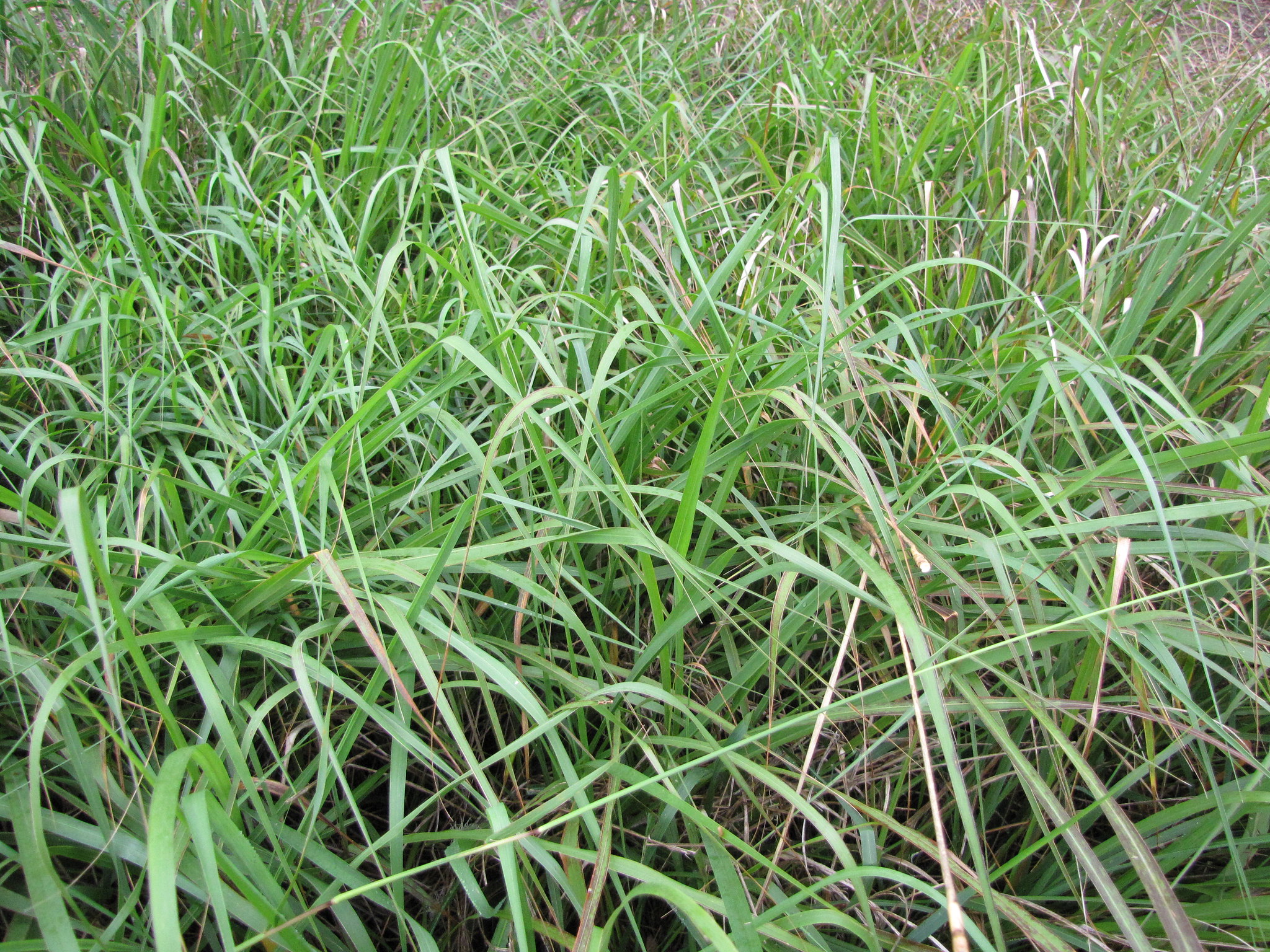
Eastern gamagrass planted for a forage trail at Mealani Ag Station Waimea, Hawai'i. Photo by Forest and Kim Starr (flickr, Creative Commons Attribution 2.0 Generic license).
How is eastern gamagrass grown?
Eastern gamagrass grows in a variety of environments and climatic conditions, from temperate to tropical and from riverbanks to prairies. Generally, however, it thrives most in high-moisture environments and in loamy soils.
Eastern gamagrass has seed dormancy, which can be broken by stratification (exposure to cold conditions). Seeds can be stratified by planting during the late fall or winter, or by putting them in cold storage for 6 to 10 weeks before seeding.
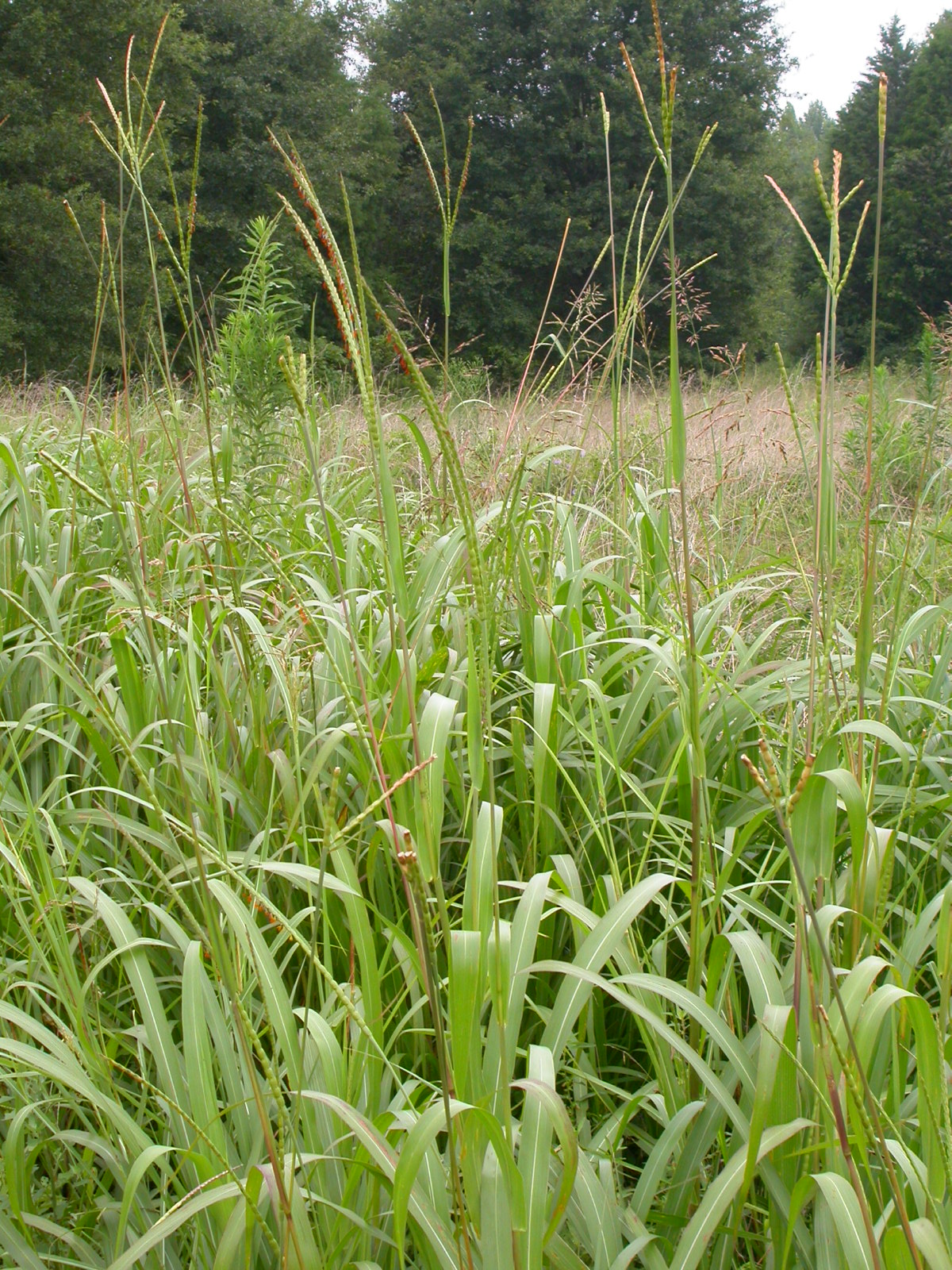
Eastern gamagrass growing in Georgia, U.S.A., 2003. Photo by Matt Lavin (flickr, Creative Commons Attribution-ShareAlike 2.0 Generic license).
How is eastern gamagrass used?
Eastern gamagrass has two main uses: it is grown as forage and as a vegetation barrier in agricultural systems.
Eastern gamagrass is an important forage crop for cattle. It is commonly used because it is palatable and easily digestible for cows. It is especially important as a food source during the summer, when other forage crops such as tall fescue (Schedonorus phoenix, a C3 grass) are less productive.
In the Southeastern U.S., eastern gamagrass is sometimes used in filter strips. In other words, it is planted alongside agricultural fields to increase infiltration and reduce water runoff. It is also used in vegetation barriers to control soil erosion, as planting eastern gamagrass increases the physical stability of soils.
Eastern gamagrass also has ecological importance. It provides habitats for animals, such as prairie chickens (Tymphanuchus) and quails, which nestle in the spaces in the middle of gamagrass tufts. It also provides cover for sparrows in the winter.
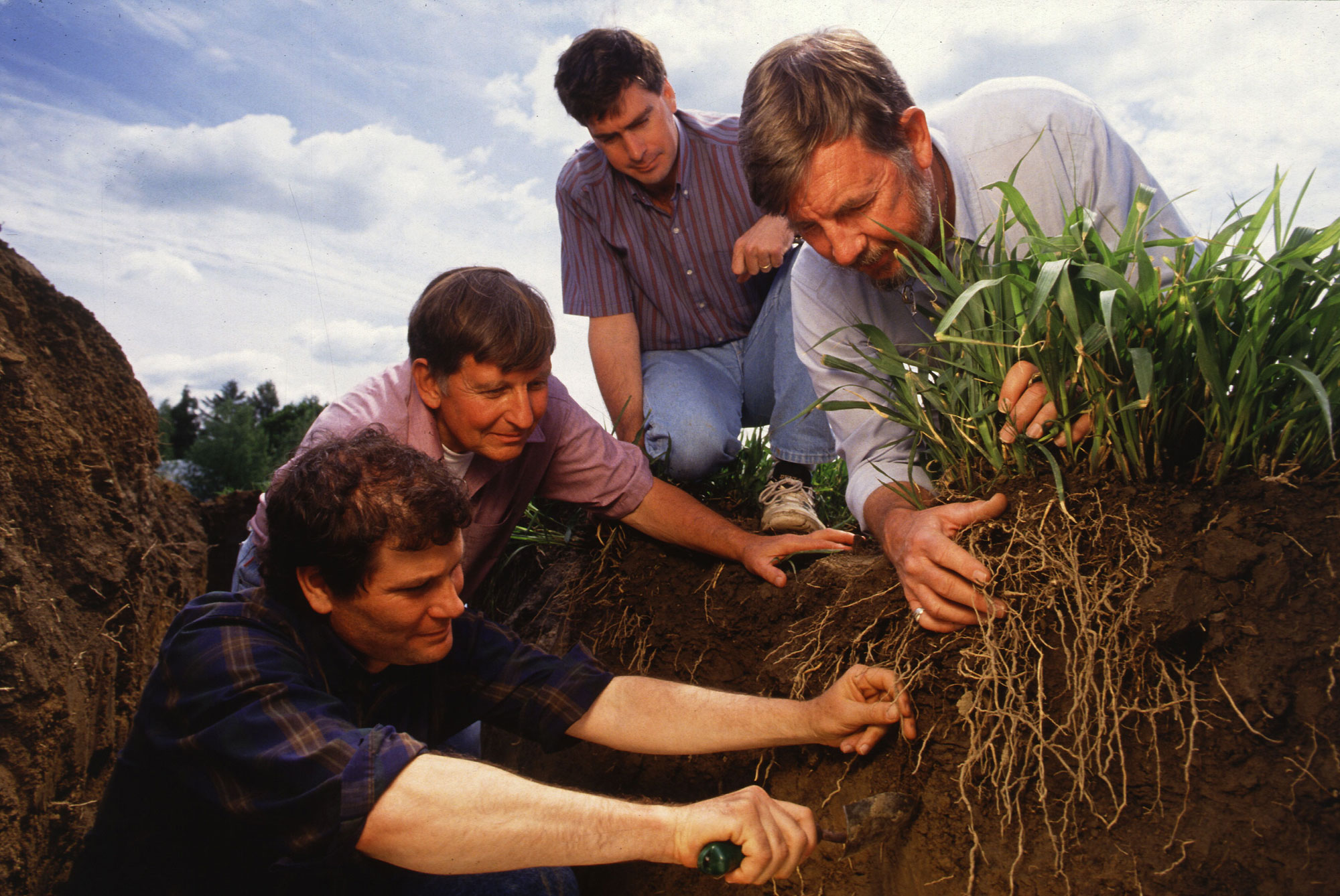
Original caption: "At the U.S. Department of Agriculture’s (USDA) Natural Resources Conservation Service (NRCS) scientists excavate eastern gamagrass roots for study at the Big Flats Plant Materials Center in NY." Photo by USDA on flickr (Creative Commons Attribution 2.0 Generic license, image resized).
What are the benefits and drawbacks of eastern gamagrass?
While eastern gamagrass has many economic and ecological benefits, it does not establish (take root) easily when planted. Because of this, it can be outcompeted by other plants during the establishment phase, and, therefore, weed control is important when cultivating eastern gamagrass.
Eastern gamagrass also seeds less prolifically than most other cultivated grasses, and thus, can be more costly to use as forage than other plants.
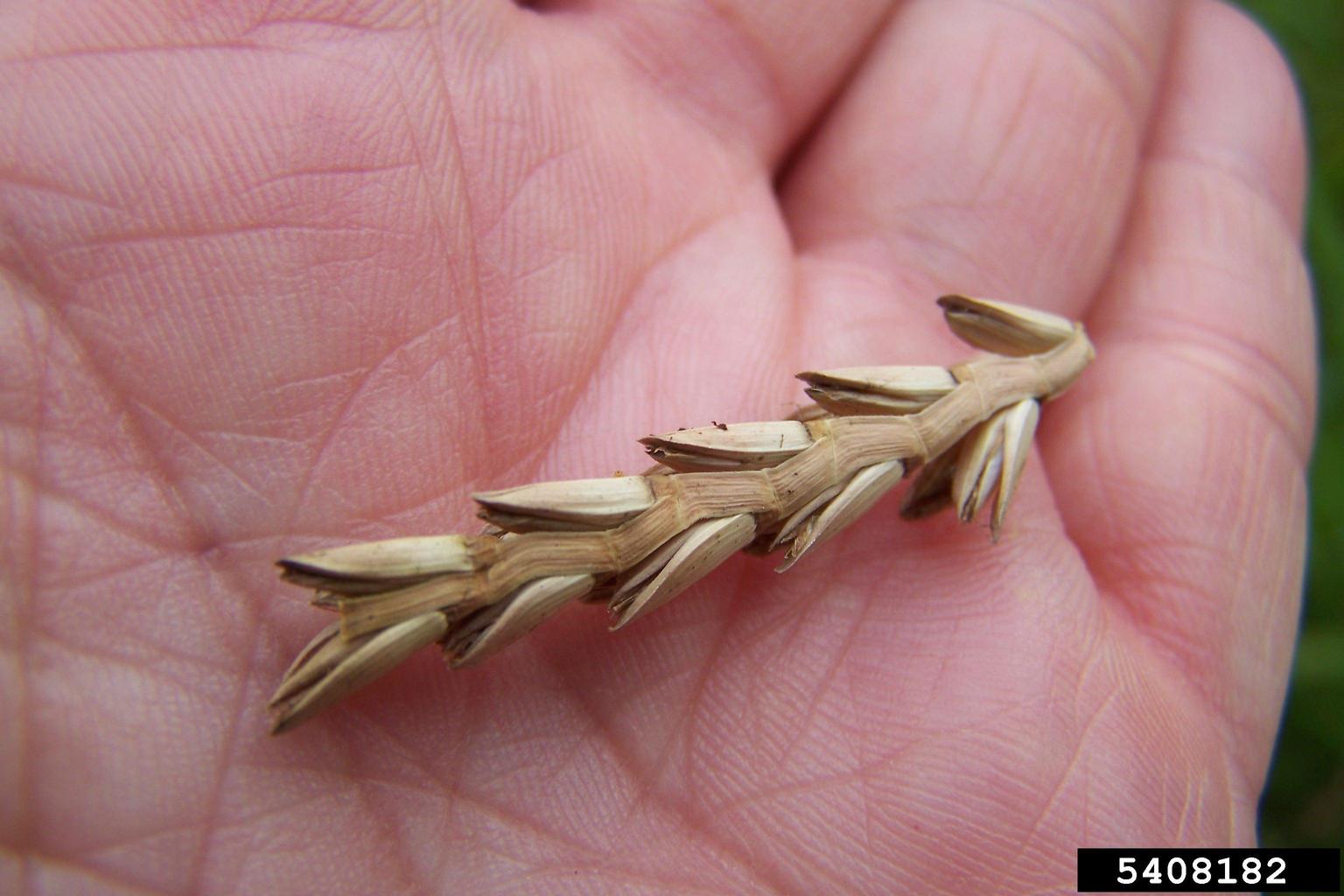
Eastern gamagrass spikelets on a segment of an inflorscence. Photo by Karan A. Rawlins, University of Georgia, Bugwood.org, licensed under a Creative Commons Attribution-Noncommercial 3.0 License.



